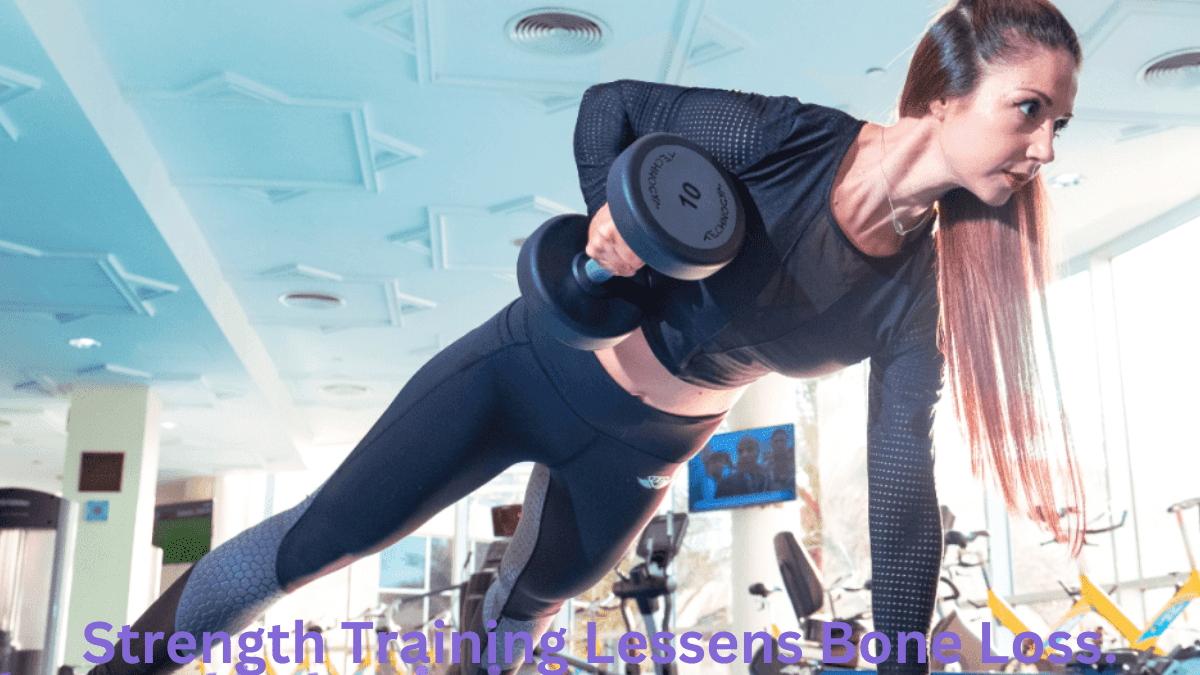In the grand symphony of our body’s health, the often-overlooked note is the crucial one—bone strength. Our bones, those unsung heroes providing structure and support, need more than just a passing thought. Did you know there’s a powerhouse move that not only keeps your muscles sculpted but also acts as a guardian against bone loss? Welcome to the realm of strength training, where lifting weights isn’t just a gym ritual but a shield for your bones.
Contents
- 1 How does weight training increase bone density? Unraveling the Connection
- 2 Weight Lifting Reverse Osteoporosis: Fact or Fiction?
- 3 Does bone density affect muscle strength? The Symbiotic Relationship
- 4 The Negative Effects of Strength Training on Bone Development: Myth-Busting
- 5 Exercises that Increase Bone Density in the Spine: Targeted Workouts
- 6 Strength Training for Bone Density: Crafting Your Regimen
- 7 How Long Does It Take to Build Bone Density? Managing Expectations
- 8 Walking with Weights for Osteoporosis: A Step-by-Step Guide
- 9 Conclusion: Empowering Your Bones through Strength Training
How does weight training increase bone density? Unraveling the Connection
The answer to the mystery of how weight training increases bone density lies in resistance. As you engage in weight training, the stress exerted on your bones becomes a catalyst for change. Bone-forming cells spring into action, fortifying bone density and strength. It’s a marvel of resistance, a process where stress is not the enemy but the agent of transformation.
Weight Lifting Reverse Osteoporosis: Fact or Fiction?
Dispelling myths is crucial to understanding the true impact of weightlifting on bone health. The notion that weight lifting can reverse osteoporosis might seem like a tale too good to be true. However, we dive into the science to unravel the reality behind this claim. Can weight lifting truly reverse osteoporosis, and if so, to what extent? Let’s separate fact from fiction, providing clarity on how weight lifting contributes to the battle against osteoporosis.
Does bone density affect muscle strength? The Symbiotic Relationship
The interplay between bone density and muscle strength is often underestimated. Does bone density affect muscle strength, or is it a one-way street? This section explores the symbiotic relationship between bones and muscles, shedding light on how their health is intricately connected. It’s not just about strong bones; it’s about the holistic well-being of your musculoskeletal system.
The Negative Effects of Strength Training on Bone Development: Myth-Busting
Strength training is celebrated for its positive impacts, but concerns about its potential negative effects on bone development linger. This section confronts these concerns head-on, separating myths from reality. Understanding the nuanced aspects of strength training ensures a well-informed approach to maintaining bone health. It’s time to dispel the shadows of doubt and embrace the empowering truth about strength training.
Exercises that Increase Bone Density in the Spine: Targeted Workouts
The spine, a critical battleground for bone density, requires targeted attention. This section provides a curated list of exercises specifically designed to increase bone density in the spine. From yoga poses to weight-bearing workouts, discover how to nurture the backbone of your skeletal system. It’s about strategic movements that resonate with your spine, contributing to its strength and resilience.
Strength Training for Bone Density: Crafting Your Regimen
Now that we’ve unveiled the profound link between strength training and bone density, it’s time to craft a personalized regimen. This section offers practical tips and exercises for strength training for bone density. From choosing the right equipment to focusing on vulnerable zones, empower yourself to build and maintain bone strength. It’s not just a workout; it’s a tailored plan for the fortress of your skeletal health.
How Long Does It Take to Build Bone Density? Managing Expectations
Embarking on a journey to build bone density requires patience and perseverance. This section manages expectations by answering the common question: How long does it take to build bone density? Understanding the timelines involved ensures a realistic and sustainable approach to achieving lasting results. It’s a reminder that Rome wasn’t built in a day, and neither are stronger bones.
Walking with Weights for Osteoporosis: A Step-by-Step Guide
For those seeking an accessible yet effective approach to combating osteoporosis, walking with weights presents itself as a viable option. This section serves as a step-by-step guide to incorporating this practice into your routine. Discover the nuances of walking with weights and its positive impact on bone health. It’s about adding intensity to your everyday movements, turning a simple walk into a bone-strengthening ritual.
Conclusion: Empowering Your Bones through Strength Training
In conclusion, the relationship between strength training and bone health is a narrative of empowerment. Strength training lessens bone loss by harnessing the body’s adaptive mechanisms. Armed with knowledge about weight training’s impact on bone density, you can navigate your fitness journey with confidence. From dispelling myths to crafting personalized regimens, this guide equips you to champion the longevity and strength of your bones. Remember, your bones are not just supporting you; they’re cheering you on with every lift and step you take. It’s time to embrace the strength within and let your bones be the silent, resilient heroes of your health.
Q1: Is it true that strength training lessens bone loss?
Yes, it is true. Strength training has been shown to play a crucial role in lessening bone loss. Engaging in regular strength training, which involves resistance exercises like weightlifting, stimulates bone-forming cells, leading to increased bone density and strength. This is particularly beneficial for mitigating the risk of osteoporosis-related fractures.
Q2: Does strength training affect bone loss?
: Absolutely. Strength training positively affects bone loss by providing the necessary stress on bones to trigger bone-forming cells into action. As a result, it helps prevent the gradual decline in bone mass that occurs with age, especially in vulnerable areas like the spine, hips, and wrists.
Q3: Does exercise reduce bone loss?
Yes, exercise, especially weight-bearing and strength training exercises, has been proven to reduce bone loss. Weight-bearing activities like walking and strength training contribute to bone health by increasing bone density, making the bones stronger and more resilient to the effects of aging.




